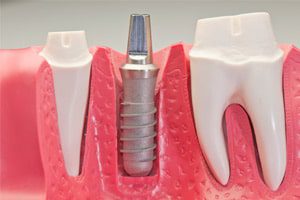
A woman in Italy who went to a doctor with inflamed sinuses and facial pain received an unusual diagnosis: a dental implant in the sinus cavity. According to a case report published this week in the New England Journal of Medicine, the woman had undergone oral surgery about two years earlier to place an implant—a […]
 A woman in Italy who went to a doctor with inflamed sinuses and facial pain received an unusual diagnosis: a dental implant in the sinus cavity.
A woman in Italy who went to a doctor with inflamed sinuses and facial pain received an unusual diagnosis: a dental implant in the sinus cavity.
According to a case report published this week in the New England Journal of Medicine, the woman had undergone oral surgery about two years earlier to place an implant—a 2-centimeter long metal screw designed to hold in place a replacement for a missing tooth—in her upper jaw. An inspection of her mouth revealed that the implant was not there and the gums over the area of the missing tooth had healed, LiveScience reports.
A CT scan showed the implant in the sinus cavity next to the woman’s left eye. After the screw was removed, the sinus symptoms went away, according to LiveScience. The researchers concluded that the implant may have ended up in the woman’s sinus system because of improper positioning, or as a consequence of tissue erosion and bone loss around the implant. Alberto Schreiber, of the University of Brescia in Italy, said that he suspects the implant had been in the woman’s sinus for at least a year, and perhaps even since the time of the original surgery. Schreiber told LiveScience that there are other reported cases of dental implants ending up in a sinus.
Other implantable devices are also reported to migrate from the implant site and cause problems for the patient. The Mirena intrauterine birth control device has been reported to perforate the uterus and migrate elsewhere in the woman’s pelvis, sometimes lodging in and injuring other organs. Numerous Mirena users have needed surgery to retrieve and remove the devices and they report a variety of complications including pain, infection, and bleeding, and unintended pregnancy when the device migrates from the uterus. Transvaginal mesh devices, used to treat pelvic organ prolapse and urinary incontinence by providing support to weakened pelvic walls, also have a history of moving from the implant site and causing injuries and complications for recipient. These implantable devices have come under scrutiny by federal regulators and have been the subject of thousands of personal injury lawsuits.


